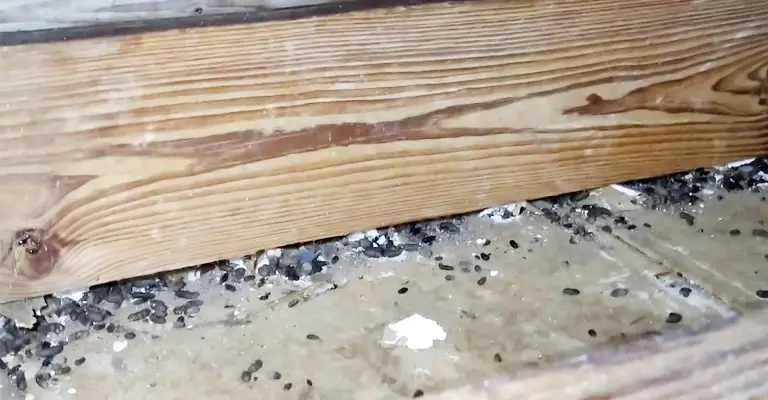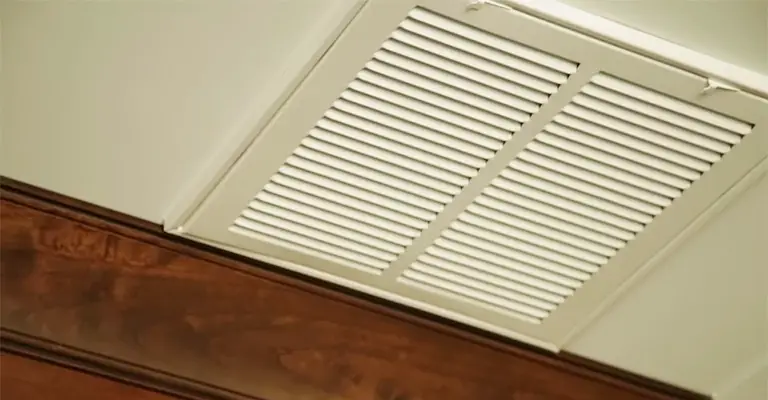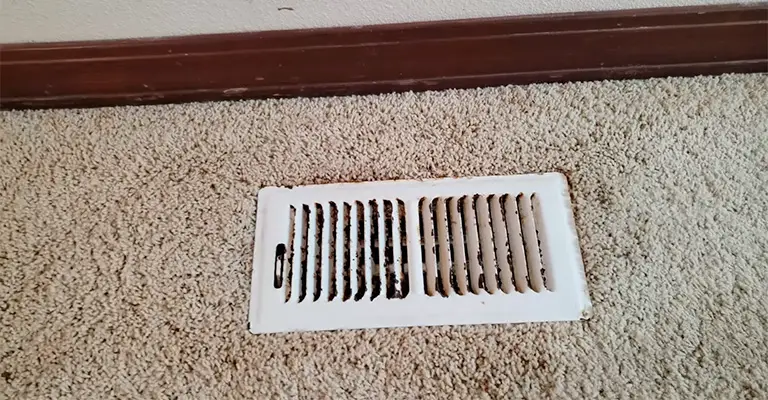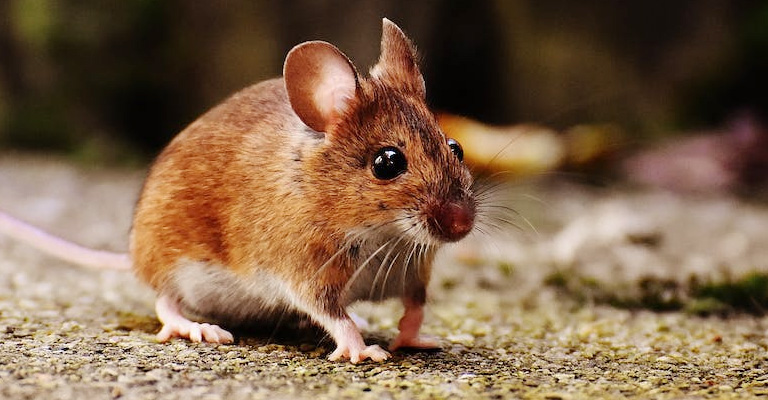Concerns about pests invading your home are entirely reasonable, and when it comes to smaller critters like mice, their ability to find unconventional entry points can be surprising.
One question that often arises is whether mice can come through floor vents. There are many sources of pest infestations in the home, including doors, windows, hose bibs and exterior vents.
What about floor vents? Can mice get in through them? Yes, they can definitely enter through floor vents. You’d be surprised how often it happens. It is crucial to get anything out of an air vent as soon as possible.
It is surprising how tiny mice can get through spaces, even through holes as narrow as a pencil. It is for this reason that they are so good at intruding on people’s homes.
Why Mice Come Into People’s Homes In The First Place
To begin with, let’s examine what causes mice to enter homes. Since they are searching for food, shelter, warmth, and water, these pests come into our homes instead of remaining outside in the wild.
All of these basic needs are usually provided by people’s houses. There is no question that mice will get inside if they can.
These rodents have a harder time surviving in the wild at certain times of the year, particularly during colder months.
It may be difficult for mice to find enough water outside in the blistering summer heat, for example. There is a shortage of both food and warm shelter during the winter.
As opportunistic eaters, mice eat whatever they can find. Their diet is based on what they can find. Most of the time, they feed on fruits, nuts, seeds, grains, and seeds in the wild. Besides eating small animals, they also eat insects.
The animals continue to eat whatever they can find when they get into our homes. They might eat pantry items, pet food in bowls, or food from the kitchen counter.
An infested home usually has mice hiding in the corners. Nests are typically built in dark, sheltered spots, such as behind appliances or inside wall voids. Due to their nocturnal nature, mice usually search for food and water at night.
How Do You Know If A Mouse Is In The Vents?

You’ll be able to tell that you have mice in your heating vents if they have an odor and are moving around.
Urinating leaves a scent behind when male mice mark their territory. Humans can quickly detect the strong, distinct smell of mouse urine when it comes through air vents because it contains pheromones.
What Are The Signs Of Mice In Air Ducts?
An air duct with mice can be identified by the following signs:
- The smell of mouse urine or the decaying corpse of a mouse in your ductwork is a distinctively repellent odor.
- If you have ductwork in your house, listen for mice scurrying or squeaking at night
- During nest building, mice collect scraps of paper and other items to build their nests inside vents.
- Having an intense, musky smell due to droppings in heating ducts. Mice excrement may also be found outside air vents.
- The length of a vent opening is marked with scratch marks.
What Do Mice Sound Like In Vents?

The noise of scratching, crawling, or scurrying you hear from mice in your vents can be heard in the walls, ceilings, and floors where the vents are located. Also, you may hear squeaking from time to time.
How Mice Get Around Your Home
To get around safely in their search for food, these little pests choose dark corridors to hide from potential threats and predators.
Air ducts and crawl spaces may be included in this category inside a home. In addition, it contains dark, protected floor vents. Their characteristics make them the ideal passageway for mice looking for food.
It’s important to remember that mice can climb as well. If the wall is textured, their tiny claws can grip onto it to climb up a perfect vertical wall. There is no doubt that mice can enter through a floor vent because of all these reasons.
You might not catch a mouse coming through a vent if you don’t catch it in the act. In addition to being highly wary of predators, these pests are most active at night.
Because of this, they usually remain hidden during daylight hours when people are most active.
Instead of coming out in the open at night, they sneak around in hidden areas. Therefore, if you notice any other signs of mice in your home, you should be vigilant.
How Do You Mouse Proof Floor Vents?

It’s nothing worse than having a mouse in your ducts… Unless maybe if the mouse poops in them! How can you deal with this?
It’s hard to put mouse traps inside your ducts, then remove the mice once they have been caught! It’s going to take a bit of creativity on your part.
Prevention
There’s a good chance that mice will end up in your air ducts if you have them in your house! Dark corridors are their favorite hiding places.
You should therefore try to prevent mice from entering your home, much less your ductwork, in the first place. There are many ways to accomplish this.
Door sweeps can help keep mice out of (outside) doors by preventing them from sliding under them. Make sure your chimney is screened with mesh as well as outside vents and pipes.
The more tightly sealed and weatherproof your home is, the less likely mice will invade it!
You should store pet food in an airtight container, including kibble. The majority of people don’t realize that mice are attracted to bowls of leftover pet food.
How To Get Rid Of Mice In Air Ducts And Your HVAC
If you don’t have help from a professional exterminating company, it’s difficult to eradicate mice from venting and HVAC systems.
Keeping mice out of your house begins with preventing them from getting in:
To keep mice from squeezing under and into outside doorways, attach door sweeps.
Ensure that all vents and pipes outside are covered with mesh screens to keep mice out.
Make sure that foundation cracks and gaps are sealed, including around entryways and windows.
When possible, place food into airtight containers and clean up any crumbs, open food sources, or messes. Ensure that pet food is sealed as well.
Should I Be Worried If I Find Mice In My Air Vents?
Mice in air vents can cause a lot of problems, not only because they emit foul odors, damage structures, and make loud noises, but also because they can carry disease and contaminate food.
Several mice can even carry the infectious virus lymphocytic choriomeningitis (LCM). Mouse droppings, urine, saliva, and nesting materials are all left behind by mice as they move through your air ducts and through your house.
When people touch or brush against these items, they can become infected with the virus. When the disease enters the body through the nose, eyes, or broken skin, it will cause serious illness.
How To Get Rid Of Mice Smell In Vents?
To eliminate the mice odor, make sure your home is ventilated as much as possible. Make sure all windows and screened doors are open and that a few fans are positioned outdoors so air can be blown in.
You may not be able to get rid of the mouse odor until your ductworks are cleaned and repaired professionally if they leak somewhere.
You can also decrease the smell by placing charcoal or coffee grounds in the ducts.
How Do You Get A Mouse Out Of An Air Vent?
The best way to deal with mice that live in air vents is to hire pest control services before the rodent damages wiring, has babies, or dies in the ducts, which emits an especially offensive smell.
Mice can be safely and efficiently removed from your vents by pest control professionals. Even a single mouse needs to be removed because more mice will likely come in and reproduce, eventually causing a large infestation.
When It’s Too Late
Most likely, if you clicked on this article, you’ve already got mice in your ducts and are trying to get rid of them. Nothing to worry about! A step-by-step guide can help you solve this problem:
- Make sure your HVAC system is turned off! At the moment, it’s still cold outside, so your vent covers are hot. You need to give them some time to cool off before doing anything with them.
- Take off all vent covers around the house next.
- Now you just need to load up your mouse trap with cheese, peanut butter, bacon, or even chocolate (yes, mice have similar favorites to humans!). A loaded trap should be placed at each vent of the duct.
- Turn on your HVAC system again and replace the vent covers.
- Make sure to look through all of these vent covers with a flashlight once a day to see if anything has been caught!
Now What?
What do you do once you catch your mice? It is imperative that you consider duct sealing services to prevent mice and bugs from living in the ducts.
Ensure your ductwork is in good condition throughout your house by checking for cracks between the ducts and the walls or roof. In order to prevent any more mice from slipping through these cracks, you should cover them with wire mesh.
Finally, what if you suspect your ducts or HVAC system have been damaged by the mice? Ensure your HVAC system is maintained and repaired by someone who is an expert.
Can Mice Live In Air Vents?
If there is food and water available to the mice, they can live in air vents. Almost anything in your home can be eaten by rats, including grains, pet food, sugars, grease, and crumbs.
Why Do Mice Go In Vents?
As long as they remain hidden, have access to food, and are kept warm, mice prefer dark places. If you live in a shared building or condominium unit, mice can easily gain access to other apartments through heating ducts and vents.
Final Words
In the absence of control, mice can wreak havoc on your home with their flexible skeletal systems. The rest of a mouse’s body structure allows it to fit easily through a tight spot if its head fits there?
The foundation, doorframes, windows, and other seemingly tight spaces in your home can all be breached by mice.
It’s common for mice to build nests in your ventilation systems and ductwork when they get into your house, so they can gain access to food and necessities.








